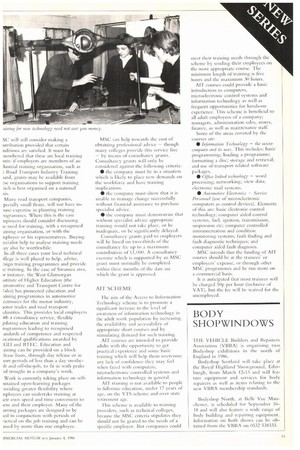AIT SCHEME The aim of the Access to Information Technology
Page 13

If you've noticed an error in this article please click here to report it so we can fix it.
scheme is to promote a significant increase in the level of awareness of' intOrmation technology in the adult work population by increasing the availability and accessibility of appropriate short courses amid by stimulating demand for such training.
AIT courses are intended to provide adults with the opportunity to get practical experience and some basic training which will help them overcome any lack of confidence they may feel when faced with computers, microelectronic controlled systems and in technology in general.
AIT training is not available to people in full-time education, under 17 years of age, on the YTS scheme and over state retirement age.
This scheme is available to training providers. such as technical colleges, because the MSC criteria stipulates they should not be geared to the needs of a specific employer. But companies could nicer their training needs through the scheme by sending their employees on the most appropriate course. The minimum length of training is five hours and the maximum 30 hours.
MT courses could provide a basic introduction to computers, microelectronic control systems and in technology as well as frequent opportunities for hands-on experience. This scheme is beneficial to all adult employees of a company; managers, administration sales, stores, finance, as well as maintenance staff Some of the areas covered by the courses are: • bilormation Technology — the microcomputer and its uses. This includes: basic programming; loading a programme; formatting a disc; storage and retrieval; and use of transport related software packages.
• Office linked technology — word processing; networking; view data; electronic mad systems.
• Anionrotipe Electronics — Service Personnel (use of microelectronic computers as control devices). Elements of this are; basic electronic control technology; computer aided control systems, fuel, ignition, transmission, suspension etc; computer controlled instrumentation and condition
monitoring systems; fault finding and fault diagnostic techniques: and computer aided fault diagnosis.
MSC intends that the funding of All courses should be at the trainees' or employers' expense, or through other MSC programmes and be run more on a commercial basis.
It is anticipated that most trainees will be charged 50p per hour (inclusive of VAT), but the fee will be waived for the unemployed.


































